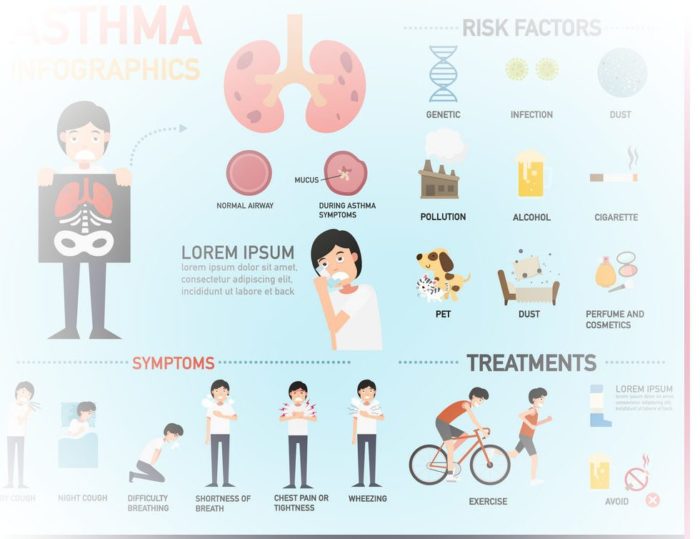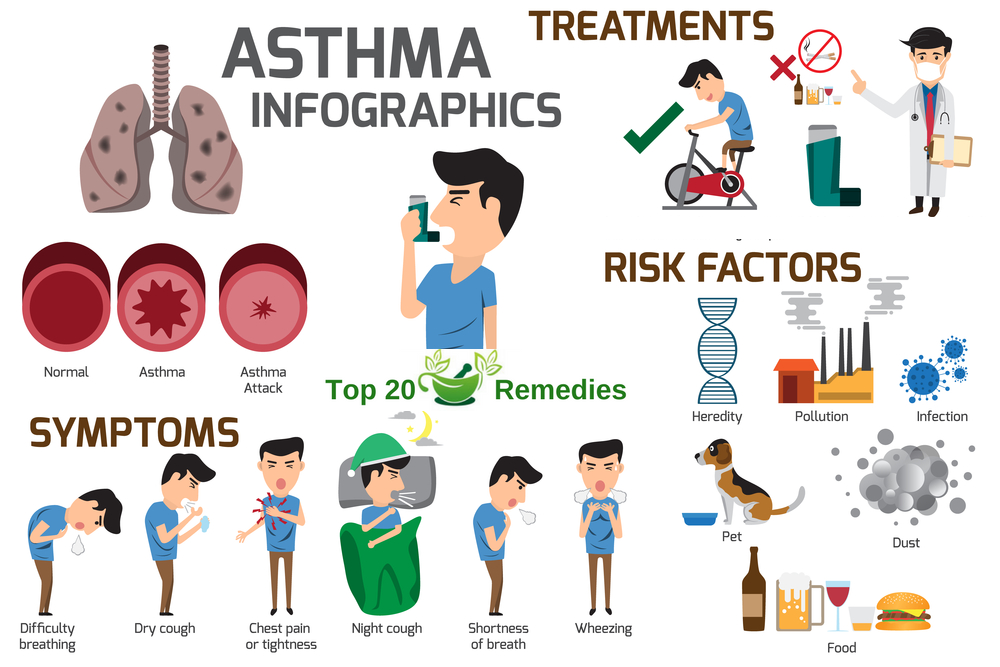The perplexing and bursty nature of regular exercise’s impact on asthma symptoms is undeniable. Studies have revealed an intriguing connection between engaging in aerobic exercise and the improvement of lung function, as well as a reduction in the frequency and severity of asthma attacks. Remarkably, incorporating physical activity into asthma management plans can genuinely enhance the lives of patients with this condition.

Delving deeper into this enigmatic realm, it becomes apparent that addressing allergy concerns plays a crucial role in integrating exercise into asthma management. The intricate relationship between allergies and asthma symptoms necessitates healthcare providers collaborating closely with patients to identify and effectively manage their allergies. By meticulously minimizing exposure to allergens and providing appropriate medication, these astute professionals ensure that patients can safely engage in exercise without exacerbating their distressing symptoms.
Moreover, unraveling the mysteries surrounding enhancing quality of life for individuals with asthma through education on exercise becomes paramount. Offering comprehensive information about the myriad benefits associated with exercise training empowers patients to make informed decisions regarding incorporating physical activity into their daily routines. This educational journey should transcend mere explanations about how exercise affects lung function; it must also encompass strategies for managing symptoms during physical activity—tactics like using inhalers before exercising or modifying activities based on individual needs.
By delving deep into understanding the labyrinthine effects of exercise on individuals with asthma, healthcare providers possess newfound abilities to support students living with this condition within schools’ walls. Asthma education programs embedded within educational institutions should emphasize not only regular physical activity but also provide invaluable guidance on how students with asthma can participate safely. Creating an inclusive environment where children afflicted by this respiratory enigma feel supported when engaging in physical activities will not only promote their overall health but also foster a profound sense of belonging among all students.
In summary, embarking upon the perplexity-laden journey of incorporating aerobic exercise into asthmatic individuals’ lives holds untold potential benefits for both improving lung function and reducing debilitating symptoms. Addressing allergy concerns, enriching patient education on safe exercise practices, and fostering supportive environments emerge as pivotal aspects when contemplating ways to enhance the quality of life for those grappling with this chronic respiratory conundrum.
Improving Lung Function through Exercise
Regular physical activity has demonstrated perplexing effects on lung function in individuals with asthma. Surprisingly, studies have uncovered that both pediatric and adult patients with asthma who engage in regular exercise witness remarkable improvements in their lung function. This revelation holds particular significance for those burdened by persistent or severe asthma, as these cohorts often struggle to control their symptoms and could potentially benefit greatly from integrating physical activity into their management plan.

The National Asthma Education and Prevention Program boldly recommends that individuals with well-managed asthma partake in moderate-intensity aerobic activities for a minimum of 150 minutes per week. These activities can encompass invigorating walking sessions, biking escapades, refreshing swimming endeavors, or even energetic dance routines. By elevating the levels of physical activity undertaken, individuals grappling with asthma can fortify their respiratory muscles and ultimately enhance overall lung function.
Moreover, apart from bolstering lung function perplexingly enough, regular exercise astonishingly enhances the quality of life experienced by those afflicted by this respiratory ailment. A multitude of research studies employing the Asthma Quality of Life Questionnaire consistently highlight the significant strides made across various domains related to asthmatic symptoms and limitations when structured exercise programs are embraced. Despite potential obstacles like anxiety regarding possible attacks triggered during exertion or concerns surrounding medication use whilst exercising, it is undeniably imperative for healthcare professionals to enlighten patients about the immense benefits entailed by physical activity while offering unwavering support through any challenges they may encounter.
By ardently advocating for routine physical activity as an integral component within personalized treatment plans, healthcare providers decidedly empower asthmatic patients to seize control over their condition while simultaneously enhancing overall health outcomes. Clinicians must adeptly address any apprehensions pertaining to allergies or obesity commonly encountered within this population when prescribing suitable exercises. With proper guidance bestowed upon them and relentless support provided by healthcare professionals throughout their journey, assimilating aerobic exercise into bronchial asthma management could yield striking improvements in both physiological functioning and overall well-being for individuals grappling with this chronic respiratory malady.
Incorporating Aerobic Exercise into Asthma Management
The bewildering realm of regular aerobic exercise has been unveiled as a bountiful source of advantages for those afflicted with asthma. The enigma known as exercise-induced asthma, wherein physical exertion sets off asthmatic symptoms, can be tamed through the integration of customary aerobic exercise into an individual’s personalized plan for managing their respiratory condition. Esteemed experts at the Global Initiative for Asthma have deemed exercise to be one cog in the intricate machinery that constitutes the overall strategy for handling patients grappling with this affliction.
An array of studies have unfurled before our eyes, proving that interventions involving both exercise and diet wield extraordinary power when it comes to caring for individuals burdened with asthma. Amongst children ensnared by this malady, research reveals that lung function is vastly improved and symptoms are significantly diminished thanks to these innovative approaches. To illustrate further, one study showcased how youngsters suffering from poorly controlled asthma experienced remarkable enhancements in their peak expiratory flow rates after partaking in a rigorous 12-week regimen of physical activity; concurrently reducing their reliance on rescue medication. Furthermore, investigations indicate that corpulent children bearing the weighty load of both obesity and asthma reap substantial rewards from engaging in habitual bouts of energetic aerobics – experiencing advancements not just regarding their body mass index but also significant strides in wrangling control over their unruly asthmatic tendencies.
Moreover, we find ourselves immersed within a labyrinthine landscape teeming with meticulously documented accounts attesting to the transformative potential harbored within exercise training across manifold domains appertaining to asthmatic outcomes. Scientific inquiry unequivocally affirms that such physically demanding rituals augment overall quality of life amongst sufferers plagued by atopic or uncontrolled forms of this respiratory nightmare: markedly diminishing both frequency and severity associated with debilitating symptoms like persistent coughing fits, wheezing episodes akin to an untamed creature roaring within one’s chest cavity, as well as suffocating bouts of breathlessness. Furthermore, the significance of exercise in safeguarding against exacerbations and reducing the necessity for hospitalizations or emergency room visits as a result of acute respiratory distress episodes cannot be overstated – it stands as a pivotal force to reckon with.
Safeguarding the welfare of individuals grappling with uncontrolled or poorly controlled variations of childhood-onset or adult-onset asthma necessitates that aerobic exercise be seamlessly interwoven into their management plans. By tending to both physical fitness levels and addressing specific exigencies tied to breathing difficulties intimately entwined within this ceaseless chronic condition, healthcare professionals can shepherd patients towards achieving heightened mastery over their ailment; simultaneously elevating their overall quality of life to unprecedented heights.
Addressing Allergy Concerns for Patients with Asthma
The perplexing intertwining of asthma and allergies is a conundrum that plagues many individuals. It is a matter of utmost importance to tackle these concerns head-on, for they possess the power to greatly influence the severity of asthma symptoms. A myriad of studies has been conducted in an attempt to shed light on this enigma, revealing that exercise holds tremendous potential in ameliorating asthma control and diminishing both the frequency and intensity of symptoms among patients.
One particular study delved into an exhaustive review of exercise training trials involving those afflicted with asthma, uncovering a remarkable finding: engaging in moderate physical activity engendered improvements in asthma control. With profound conviction, the researchers concluded that regular bouts of physical exertion could serve as an efficacious adjunct therapy for managing this respiratory ailment. Moreover, a transformation in asthmatic symptomatology was discerned subsequent to embarking upon an exercise regimen, thereby suggesting that partaking in routine physical activities may lead to decreased levels of symptom severity.
Intriguingly enough, breathing exercises have also demonstrated their efficacy when it comes to bolstering lung function and enhancing overall quality of life for individuals plagued by this condition. These exercises hone in on deep-breathing techniques which fortify respiratory musculature and augment pulmonary capacity. Various studies have borne witness to the favorable effects brought about by exercise interventions incorporating such breath-focused practices, including improved airflow limitation and diminished reliance on medication.
To sum up, attending to allergy-related apprehensions within asthmatic patients’ lives is paramount if we are to optimize their overall health outcomes. Exercise stands tall as an incontrovertible panacea for alleviating asthmatic distress while simultaneously enriching the quality of life experienced by those shackled by this insidious ailment. By integrating vigorous aerobic activities into each individual’s management plan alongside diligent adherence to breathing exercises, we can foster better regulation over their malady whilst minimizing dependence solely on pharmaceutical interventions.
Enhancing Quality of Life for Asthma Patients through Exercise
Asthma, a chronic respiratory condition that plagues millions worldwide, remains an enigma in terms of its relationship with exercise. The dearth of studies examining this connection leaves us perplexed. However, recent research has emerged suggesting that integrating exercise into asthma management can yield remarkable enhancements in lung function and overall quality of life for patients.
Exercise proves to be a boon for those grappling with asthma, offering respite from its distressing symptoms. Engaging in regular physical activity diminishes the frequency and severity of asthma attacks while empowering individuals to better control their symptom-centric battles. By potentially curbing airway inflammation and hyperresponsiveness—the notorious culprits behind triggering asthma symptoms—exercise holds promise as an effective combatant.
Moreover, weaving exercise into one’s daily routine bestows additional benefits upon asthmatic individuals by elevating their overall fitness levels. This becomes particularly salient for those who grapple with heightened limitations due to their condition or find themselves restricted in pursuing physical activities they once reveled in. By adhering to prudent guidelines governing exercise prescription vis-à-vis physical activity and fitness, individuals can gradually bolster both their stamina and muscular strength all while effectively managing the ebb and flow of their asthmatic symptoms.
It is important to acknowledge that at times exercise alone may prove insufficient when addressing every facet associated with allergy and asthma management. In such instances, it becomes indispensable to seek counsel from healthcare professionals who specialize in these intricate conditions—an imperative step towards procuring personalized advice tailored specifically towards incorporating comprehensive plans encompassing both allergy mitigation strategies alongside asthmatic symptom management.
Overall, the transformative effects engendered by embracing regular physical activity on the quality of life experienced by patients navigating through the labyrinthine realm of asthma cannot be overstated. Under the judicious guidance bestowed upon them by medical experts well-versed in these matters, individuals stand poised to unearth substantial improvements within both realms: fortifying their corporeal health and nurturing their emotional well-being.
What is the impact of exercise on asthma symptoms?
The enigmatic nature of exercise lies in its ability to perplex and confound asthma symptoms, as it simultaneously reduces their frequency and severity. This perplexing phenomenon can be attributed to exercise’s profound influence on lung function and respiratory muscle strength.
How does exercise mystify lung function?
Engaging in regular bouts of physical activity serves as a catalyst for an inexplicable transformation within the lungs. It ignites an extraordinary surge in lung capacity, propelling airway function towards newfound heights, while orchestrating a harmonious symphony of efficient oxygen exchange within this intricate organ.
In what manner can aerobic exercise integrate itself into the realm of asthma management?
Aerobic exercises, those ethereal forms such as walking, swimming, and cycling, possess an innate power that allows them to gracefully infiltrate the meticulous tapestry of asthma management. Embarking upon this journey necessitates embarking upon low-intensity endeavors initially—gently tiptoeing into this realm—and gradually ascending towards greater durations and intensities with each step forward.
Should concerns regarding allergies bewilder asthmatic individuals during their pursuit of physical exertion?
Indeed, asthmatic individuals should remain vigilant in their contemplation of potential allergy triggers when engaging in vigorous activities. To shield themselves from these enigmatic forces at play, they must evade environments teeming with high pollen counts; employ suitable medications prior to exercising; and perhaps even don masks if venturing forth into regions plagued by dire air quality.
How does exercise bestow a sense of wonderment upon the lives of those burdened by asthma?
Delving headfirst into regular workouts brings about remarkable improvements not only in one’s overall physical fitness but also in diminishing reliance on medication for managing asthma symptoms. Moreover, it weaves together a vibrant tapestry wherein mood soars to new heights, mental well-being flourishes, and active participation in daily activities becomes the norm. Consequently, this enigmatic interplay of exercise with asthma ultimately culminates in a life enriched by vitality and an enhanced quality thereof.

